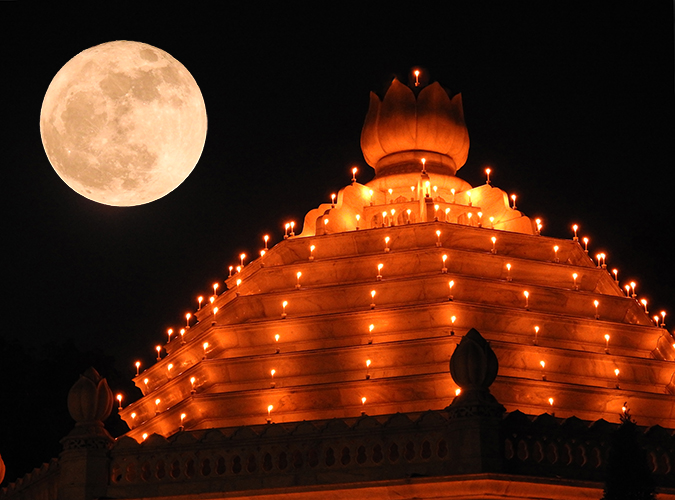You don’t have to be a hunter to enjoy the Hunter’s Moon tonight, Oct. 20. More below from EarthSky. Happy viewing and/or hunting.
“The Hunter’s Moon is the full moon after the Harvest Moon. It usually falls in October, but, if not, it falls in early November. [ . . .] It’s a characteristic of the Hunter’s Moon to rise around the time of sunset for several evenings in a row, as if this month has more than one full moon.”

Hunter’s Moon October 20, 2021
The Hunter’s Moon is the full moon after the Harvest Moon. It usually falls in October, but, if not, it falls in early November. October 2021’s full moon – the Northern Hemisphere’s Hunter’s Moon – will be 100% lit on October 20 at 14:56 UTC; translate UTC to your time. On October 21, and even on October 22, you might glimpse a full round moon ascending in the east in early evening. It’s a characteristic of the Hunter’s Moon to rise around the time of sunset for several evenings in a row, as if this month has more than one full moon.
Eastern Australia and New Zealand will see the full moon on October 21. It’s not a Hunter’s Moon for the Southern Hemisphere because it’s spring in that hemisphere now. So the full moon has different characteristics.
Every full moon has a slew of nicknames, and most are tied to months of the year. But some moon names, such as the Harvest and Hunter’s Moons, are tied to seasons. The Harvest Moon is the full moon closest to the September equinox, or autumnal equinox for the Northern Hemisphere. The equinox is typically September 22 or 23. So most Harvest Moons come in September. But, every three years, the Harvest Moon falls in early October and the Hunter’s Moon in November.
In North America, the Harvest Moon was a time when the bright moon meant farmers could stay out later, working in their fields, gathering in the crops before the first freeze. After the harvest, farmers would turn to hunting deer and other animals to bolster their food stores before winter. The light of the full moon would let them hunt into the evening hours. So today we have a Hunter’s Moon.

What makes this moon special?
Nature is particularly cooperative around the time of the autumn equinox to make the fall full moonrises unique. On average, the moon rises about 50 minutes later each day. But when a full moon happens close to the autumnal equinox – either a Harvest or a Hunter’s Moon – the moon (at mid-temperate latitudes) rises only about 30 to 35 minutes later daily for several days before and after the full moon. The reason is that the ecliptic – or the moon’s orbital path – makes a narrow angle with the evening horizon around the time of the autumn equinox.
The result is that there’s a shorter-than-usual lag time between successive moonrises around the full Hunter’s Moon.
Early evening moonrises make every Hunter’s Moon special. Every full moon rises around sunset. After the full Hunter’s Moon, you’ll see the moon ascending in the east relatively soon after sunset for a few days in a row at northerly latitudes.
If you’re in the Northern Hemisphere, look for the moon to be bright and full-looking for several nights from around October 19 to the 22. Around all of these nights, you’ll see a bright round moon ascending in the east in the evening hours.